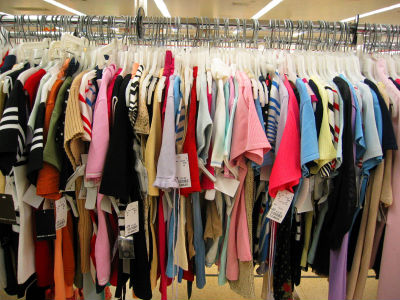Do we buy new trends because we like having the possibility to wear different things every day or due to their low quality which means new clothes are regularly needed? The reality is that price is so low that we almost buy without thinking.
Since early 90s our clothes consumption has doubled. The increase in consumption is down to very cheap prices. But the truth is, cheap clothing has a real price which is paid in miserable working conditions and significant negative environmental impact.
The market shift appeared with the emergence of a new retail model and a change in consumption habits. Fashion brands started producing clothes which were trendy, fitting every style and budget, to be delivered as soon as possible to “thoughtless consumers.” The latter filled wardrobes with low quality clothes that they actually didn’t need and probably wouldn’t wear for long. And so the vicious cycle was initiated, reproducing itself and its related collateral damages.
However what we do not realise is the serious negative consequences of our fashion purchases that do not affect just ourselves. What should concern us is human and environmental impact of the fashion industry.
First of all, the shocking working conditions of textile workers are what allows brands to sell clothing at a very low price. Many of them work in unsafe buildings for up to 12 hours or more for a miserable wage. In Bangladesh 1,137 people died when the Rana Plaza factory collapsed. Brands have always been promoting themselves as ethical retailers, through visible codes of conduct and mission statements. But workers continue to die. The truth is that higher profits are a result of the complete disregard of workers’ life.
If at the store the action of buying or not a t-shirt does not make much difference to us, that purchase in reality has serious environmental impacts. Polyester, which is widely used by fashion brands because it is resistant, inexpensive and simple to produce, is made from petroleum whose production is energy-intensive and generates harmful emissions. The largely used cotton, also has very bad effects due to the incredible amount of toxic water pollution created (Groundswell).
It is not only international organisations and NGOs that should be pushing for more sustainable clothes production. Consumers have a role to play. We can make conscientious decisions.
For a start consumers should heed the tough lessons and advice given by Elisabeth Cline, in her book “Overdressed: the shocking high cost of cheap fashion.” Stop buying low quality disposable clothes that will not last long. Think. Does €20 really seem like a fair price to pay for a dress? Of course someone else is paying the price, whether it be the factory workers or the environment. Buy vintage or second-hand, rework old clothes, it is even cheaper. Support independent designers because clothes that are made in fair work conditions, in small number and with good materials are worth the extra cost.
It seems clear that the attitude of “as long as it is cheap we will buy it” needs to change. If it is true that every person’s behaviour is driven by his or her personal set of values and principles, money should never be prioritised over human life. Being able to “see” the human face behind the clothes we buy would change our “thoughtless” fashion choices and make a positive step towards environmental sustainability and better human working conditions.


